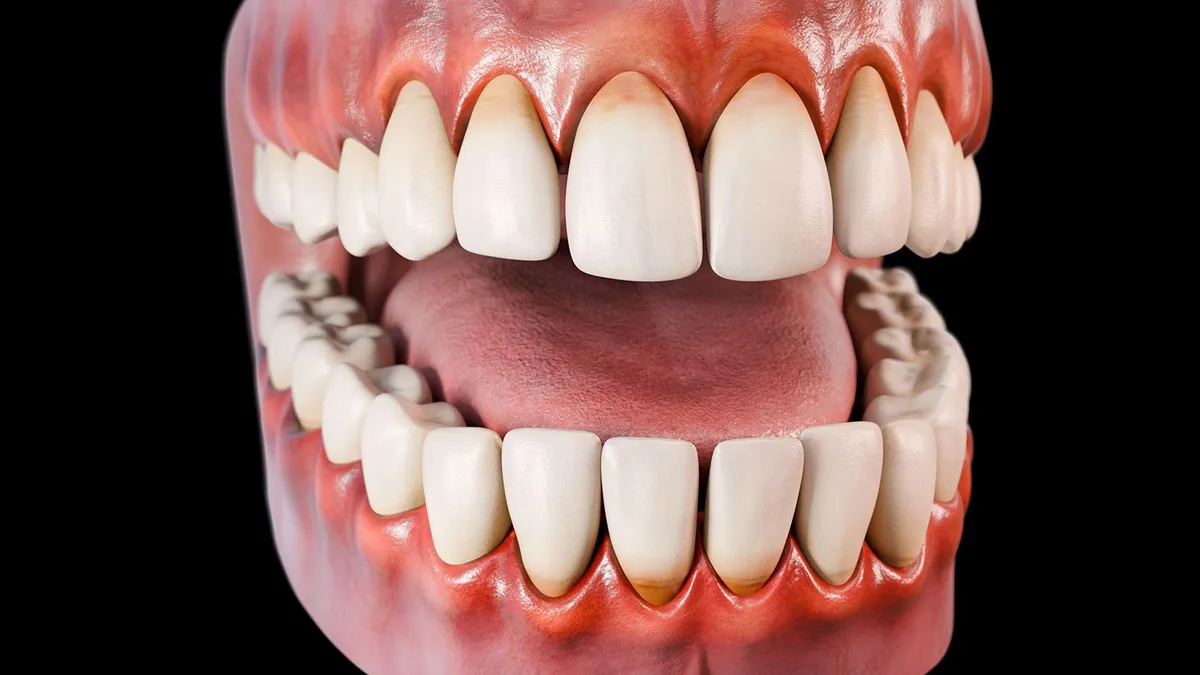
Recent findings from the Atherosclerosis Risk in Communities (ARIC) study have highlighted a concerning connection between gum disease and white matter hyperintensities, a significant imaging marker of cerebral small vessel disease. Involving 1,143 participants, the study, led by Dr. Souvik Sen from the University of South Carolina, found that individuals with periodontal disease showed a higher association with the highest quartile of white matter hyperintensity volume (adjusted OR 1.56, 95% CI 1.01-2.40), as documented in the journal Neurology Open Access.
A parallel analysis involving 5,986 ARIC participants revealed significant differences in the incidence of ischemic stroke over a 21-year follow-up period. The data indicated that 4.1% of those with good oral health experienced strokes, compared to 6.9% with periodontal disease and 10.0% for those with both periodontal disease and dental caries. Notably, the presence of periodontal disease alongside caries was linked to an increased risk of ischemic stroke (HR 1.86, 95% CI 1.32-2.61) and major adverse cardiovascular events (HR 1.36, 95% CI 1.10-1.69) when compared to individuals with optimal oral health.
These findings underscore the critical role of oral health in stroke risk, a well-documented association. Dr. Leonardo Pantoni from the University of Milan emphasized that while the correlation between oral health and stroke risk is recognized, its relationship with white matter hyperintensity pathogenesis remains less explored. He noted that white matter hyperintensities, often regarded as silent indicators of cerebrovascular disease, are far from benign. A substantial body of research has established that severe white matter hyperintensities correlate with increased risks of dementia, mortality, and various functional deficits.
Dr. Pantoni suggests that these studies provide compelling evidence for neurologists to consider incorporating lifestyle interventions, such as improved oral health, into comprehensive stroke prevention strategies. This approach should complement existing pharmacologic treatments, as oral health may significantly impact brain health.
The ongoing ARIC study, initiated in 1987, has enrolled nearly 16,000 participants aged 45 to 65 from four U.S. communities. Since its inception, participants have undergone multiple follow-up visits. The Dental ARIC ancillary study, which took place from 1996 to 1998, involved a detailed analysis of oral health among participants. In the investigation of white matter hyperintensity, 800 participants were identified as having periodontal disease, while 343 maintained periodontal health. Participants were categorized into quartiles based on white matter hyperintensity volume, with the highest quartile showing volumes exceeding 21.36 cm³ and the lowest quartile under 6.41 cm³.
Imaging measures of cerebral small vessel disease included assessments of white matter hyperintensity volume, cerebral microbleeds, and lacunar infarcts. Interestingly, the study found no association between periodontal disease and either cerebral microbleeds or lacunar infarcts, a finding that could be attributed to limitations in statistical power or differing pathogenesis among these cerebral features, as suggested by Dr. Pantoni.
The ischemic stroke analysis revealed that 1,640 individuals had good oral health, while 3,151 had only periodontal disease, and 1,195 had both periodontal disease and dental caries. Furthermore, the analysis indicated that regular dental care significantly reduced the odds of developing periodontal disease (OR 0.71, 95% CI 0.58-0.86) and periodontal disease with caries (OR 0.19, 95% CI 0.15-0.25). The researchers highlighted that systemic inflammation arising from dental disease may play a pivotal role in influencing brain health.
Dr. Sen noted that if future studies confirm the link between gum disease and white matter hyperintensities, it could pave the way for new strategies aimed at reducing cerebral small vessel disease through targeted interventions for oral inflammation. However, a limitation acknowledged by the researchers is that oral health was assessed only once, meaning changes in dental health over time were not monitored.